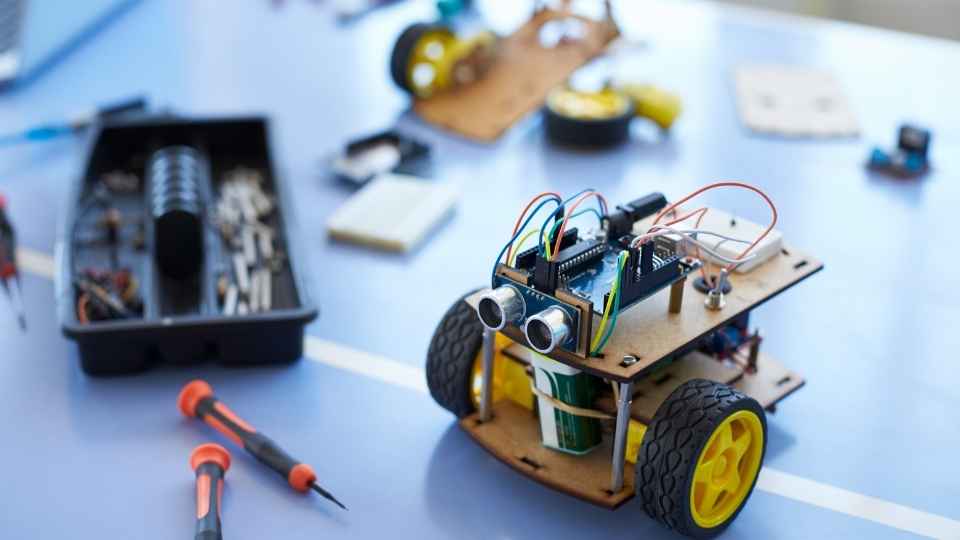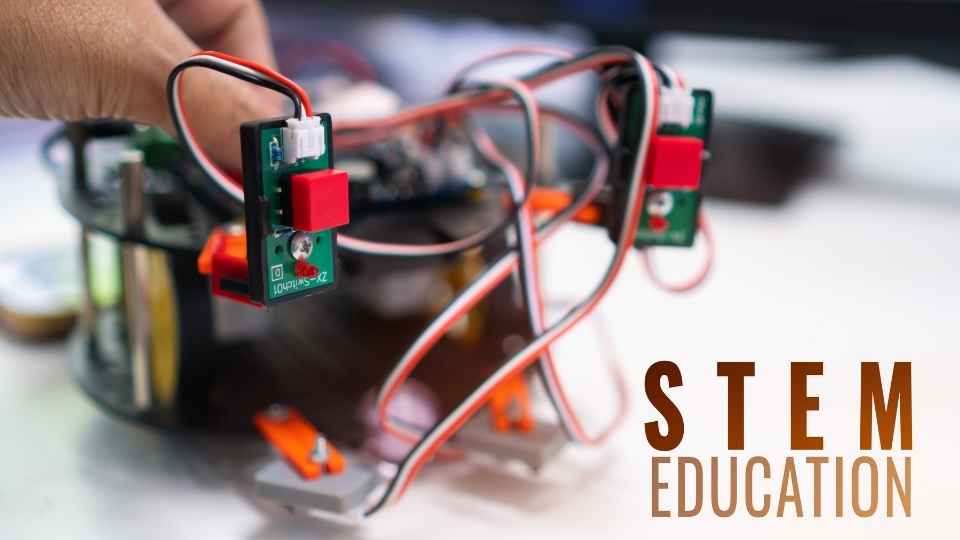
The world of electronics is undergoing a revolution, and at the forefront of this transformation are smart textiles. These innovative fabrics combine the functionality of traditional electronics with the flexibility and wearability of textiles.
From clothing that monitors our health to interactive displays woven into everyday items, smart textiles have the potential to reshape our future in unimaginable ways.
In this article, we will delve into the advancements, applications, challenges, and innovations surrounding flexible and wearable electronics. Join us as we explore how smart textiles are transforming the future with their boundless possibilities.
Key Takeaways
- Smart textiles combine traditional textiles with advanced electronics and sensing capabilities.
- Advancements in flexible electronics have paved the way for smart textiles.
- Smart textiles revolutionize wearable technology by enabling advanced garments that monitor vital signs and provide therapeutic benefits.
- Smart textiles have applications in various industries such as healthcare and athletics, offering promising advancements for patient care and sports performance.
The Rise of Smart Textiles in the Electronics Industry
The incorporation of smart textiles into the electronics industry has seen a significant rise in recent years. These innovative textiles, also known as e-textiles or electronic fabrics, combine the functionality of traditional textiles with advanced electronics and sensing capabilities. This convergence of technology and textiles has opened up new possibilities for flexible and wearable electronics, transforming the future of various industries.
Smart textiles are made using conductive materials such as metals, carbon nanotubes, or conductive polymers, which are integrated into the fabric structure to create circuits and sensors. This integration allows for seamless integration of electronic components within everyday garments and accessories. The result is a range of applications that span from healthcare monitoring devices to sports performance apparel.
One key advantage of smart textiles is their flexibility and adaptability. Unlike rigid electronic devices, these textiles can conform to different shapes and contours without compromising functionality. This enables greater freedom of movement for individuals who wear them, making them ideal for applications in sports, healthcare, military, and fashion industries.
Moreover, smart textiles offer enhanced comfort and convenience compared to traditional wearable devices. By integrating electronics directly into fabrics, there is no need for separate devices or bulky attachments that can be uncomfortable to wear or restrict mobility.

In addition to their technical advantages, smart textiles also provide users with a sense of freedom by seamlessly blending technology into their everyday lives. The discreet nature of these fabrics allows individuals to benefit from advanced functionalities without drawing attention or feeling self-conscious about wearing electronic devices.
Overall, the rise of smart textiles in the electronics industry has paved the way for a new generation of flexible and wearable electronics that offer improved functionality, comfort, and freedom to users across various sectors. As research continues to push boundaries in material science and textile engineering fields, we can expect even more exciting innovations in this rapidly evolving field.
Exploring the Advancements in Flexible Electronics
Significant progress has been made in the field of flexible and wearable electronics. Particularly, advancements related to the exploration of new possibilities and applications have been notable. The development of flexible electronic components such as sensors, displays, and batteries has paved the way for the creation of smart textiles. These textiles seamlessly integrate electronics into clothing and accessories. They offer a range of innovative functionalities such as health monitoring, gesture recognition, and energy harvesting.
Researchers are continuously exploring new materials and manufacturing techniques to enhance the flexibility, durability, and comfort of these smart textiles. Additionally, advancements in wireless communication technologies enable seamless connectivity between these textile-based devices and other smart devices. This creates an interconnected ecosystem that provides individuals with freedom in terms of mobility and convenience.
As this field continues to evolve rapidly, we can expect even more exciting developments in flexible and wearable electronics in the near future.
Revolutionizing Wearable Technology With Smart Textiles
Revolutionizing Wearable Technology With Smart Textiles has become a significant breakthrough in the field of wearable devices.
By integrating electronics and fabrics, smart textiles have enabled the creation of advanced garments that can monitor vital signs, collect data, and even provide therapeutic benefits.

This convergence of technology and textiles has opened up new possibilities for seamless integration of wearable devices into our daily lives, revolutionizing the way we interact with technology.
Smart Textile Innovations
Emerging advancements in smart textiles are driving transformative innovations in the field. These innovative textiles are revolutionizing various industries and opening up new possibilities for wearable technology.
Here are some key developments in smart textile innovations:
Conductive Fibers: Smart textiles now incorporate conductive fibers that allow for seamless integration of electronic components, such as sensors and actuators.
Energy Harvesting: Smart textiles can harness energy from the environment, such as body movement or solar power, to power electronic devices integrated into the fabric.
Biometric Monitoring: Textiles embedded with biometric sensors enable real-time monitoring of vital signs, providing valuable health data for users.
Gesture Recognition: Advanced smart textiles equipped with gesture recognition capabilities allow for intuitive control of electronic devices by simply moving or gesturing.

Data Connectivity: Smart textiles can connect wirelessly to other devices, enabling seamless data transfer and integration with smartphones or IoT platforms.
These advancements in smart textiles empower individuals by providing them freedom through enhanced functionality, comfort, and convenience in their everyday lives.
Impact on Wearable Devices?
The advancements in smart textiles have greatly influenced the capabilities and functionalities of wearable devices. These fabrics are embedded with electronic components, enabling them to perform various functions beyond traditional clothing materials.
Smart textiles have revolutionized the way wearable devices are designed and utilized, offering a seamless integration of technology into our everyday lives. The use of conductive fibers allows for the creation of sensors that can monitor vital signs, track movement, and even detect gestures. This enables wearables to provide accurate health monitoring, enhance athletic performance, and enable intuitive control of other connected devices.
Furthermore, smart textiles offer flexibility and comfort, making them ideal for applications such as fitness trackers, smartwatches, and even medical monitoring garments.
As technology continues to advance in this field, the potential for further innovation and freedom in wearable devices is limitless.
Applications and Impacts of Smart Textiles in Various Industries
Smart textiles have found numerous applications in various industries, showcasing their potential to enhance safety and improve performance.

In the healthcare sector, smart textiles are being used to monitor patients' vital signs and provide real-time feedback.
Additionally, in the athletic industry, these textiles are employed to track athletes' movements and optimize their training routines.
These innovative solutions offer promising advancements for both patient care and sports performance.
Enhancing Safety in Healthcare
With the integration of flexible and wearable electronics, healthcare professionals can now improve safety measures in medical environments. These innovative technologies offer a range of benefits that enhance patient care and minimize risks. Here are five ways smart textiles are transforming safety in healthcare:
Real-time monitoring: Smart garments equipped with sensors continuously monitor vital signs, allowing healthcare providers to detect any abnormalities promptly.
Fall detection: Wearable devices can detect sudden movements or changes in posture, alerting caregivers to potential falls and enabling quick intervention.
Infection control: Antimicrobial fabrics help prevent the spread of pathogens by reducing bacterial colonization on clothing surfaces.

Staff location tracking: RFID-enabled badges or smart uniforms enable accurate tracking of healthcare personnel within medical facilities for better coordination during emergencies.
Personal protective equipment (PPE) enhancement: Smart textiles integrated into PPE provide additional protection against hazardous substances while offering comfort and flexibility.
These advancements not only ensure the safety of patients but also create a more efficient and secure working environment for healthcare professionals.
Incorporating innovative technologies into athletic gear allows athletes to enhance their performance and optimize their training routines. One such technology that is transforming the future of sports is smart textiles. These textiles are made from flexible and wearable electronics, which seamlessly integrate sensors, conductive materials, and wireless communication devices into the fabric.
This enables athletes to monitor various physiological parameters in real-time, such as heart rate, body temperature, and muscle activity. The data collected can be analyzed to provide valuable insights into an athlete's performance and help identify areas for improvement.
Additionally, smart textiles can also assist in injury prevention by detecting abnormal movement patterns or excessive strain on muscles and joints. With these advancements in athletic gear, athletes have the freedom to push their limits while minimizing the risk of injuries and maximizing their training outcomes.
Challenges and Innovations in Developing Flexible and Wearable Electronics
One of the key aspects that researchers and engineers are currently focusing on is overcoming the challenges faced in developing flexible and wearable electronics, while also driving innovations in this field.

The development of flexible and wearable electronics has opened up new possibilities for technology integration into everyday clothing and accessories. However, there are several challenges that need to be addressed in order to fully realize the potential of these technologies.
These challenges include:
- Ensuring durability and reliability of the electronic components
- Developing power sources that can be seamlessly integrated into garments
- Creating comfortable and breathable materials that can withstand frequent stretching and bending
- Optimizing connectivity for seamless data transfer
- Addressing privacy concerns related to the collection of personal data through wearable devices.
The Future of Smart Textiles: Towards a Connected and Interactive World
The increasing integration of technology into everyday clothing and accessories is paving the way for a connected and interactive world, where textiles play a crucial role in enhancing our daily lives.
Smart textiles, also known as e-textiles or electronic textiles, are fabrics that incorporate electronic components and functionality to provide new levels of comfort, convenience, and utility. These textiles can include sensors that monitor vital signs, flexible displays that provide real-time information, or even communication capabilities that allow for seamless interaction with other devices.
By seamlessly integrating technology into our clothing and accessories, smart textiles offer an unprecedented level of freedom and connectivity. Imagine garments that can automatically adjust their temperature based on your body's needs or accessories that can track your fitness goals while providing personalized recommendations.
The future of smart textiles is bright, promising a world where fashion meets technology to create innovative solutions for our ever-evolving lifestyles.
Frequently Asked Questions
What Are Some Examples of Industries That Are Currently Utilizing Smart Textiles in Their Products?
Industries such as healthcare, sports and fitness, fashion, and automotive are currently utilizing smart textiles in their products. These industries recognize the potential of smart textiles to enhance functionality, comfort, and performance for their customers.

How Are Smart Textiles Able to Be Flexible and Wearable?
Smart textiles are able to be flexible and wearable due to the integration of electronic components into the fabric. These components, such as sensors and conductive materials, are designed to be lightweight and pliable, allowing for seamless integration with clothing and other textile-based products.
Are There Any Limitations or Challenges in the Development of Flexible and Wearable Electronics?
The development of flexible and wearable electronics faces several limitations and challenges. These include the need for high-performance materials that can withstand bending and stretching, as well as the integration of complex electronic components into textiles while ensuring comfort, durability, and washability.
How Do Smart Textiles Contribute to the Advancement of Wearable Technology?
Smart textiles contribute to the advancement of wearable technology by integrating electronic components into fabrics, enabling seamless integration of technology and clothing. This enhances user experience, promotes mobility, and offers freedom in accessing information and staying connected.
What Are Some Potential Future Applications of Smart Textiles in Everyday Life?
Smart textiles have the potential to revolutionize everyday life. They can be used in healthcare for monitoring vital signs, in sports for performance tracking, and in fashion for personalized style. The possibilities are endless.
 Basic Electronics ConceptsEssential ToolsCircuit Design BasicsMicrocontrollersDIY Electronics ProjectsRoboticsPrivacy PolicyTerms And Conditions
Basic Electronics ConceptsEssential ToolsCircuit Design BasicsMicrocontrollersDIY Electronics ProjectsRoboticsPrivacy PolicyTerms And Conditions
